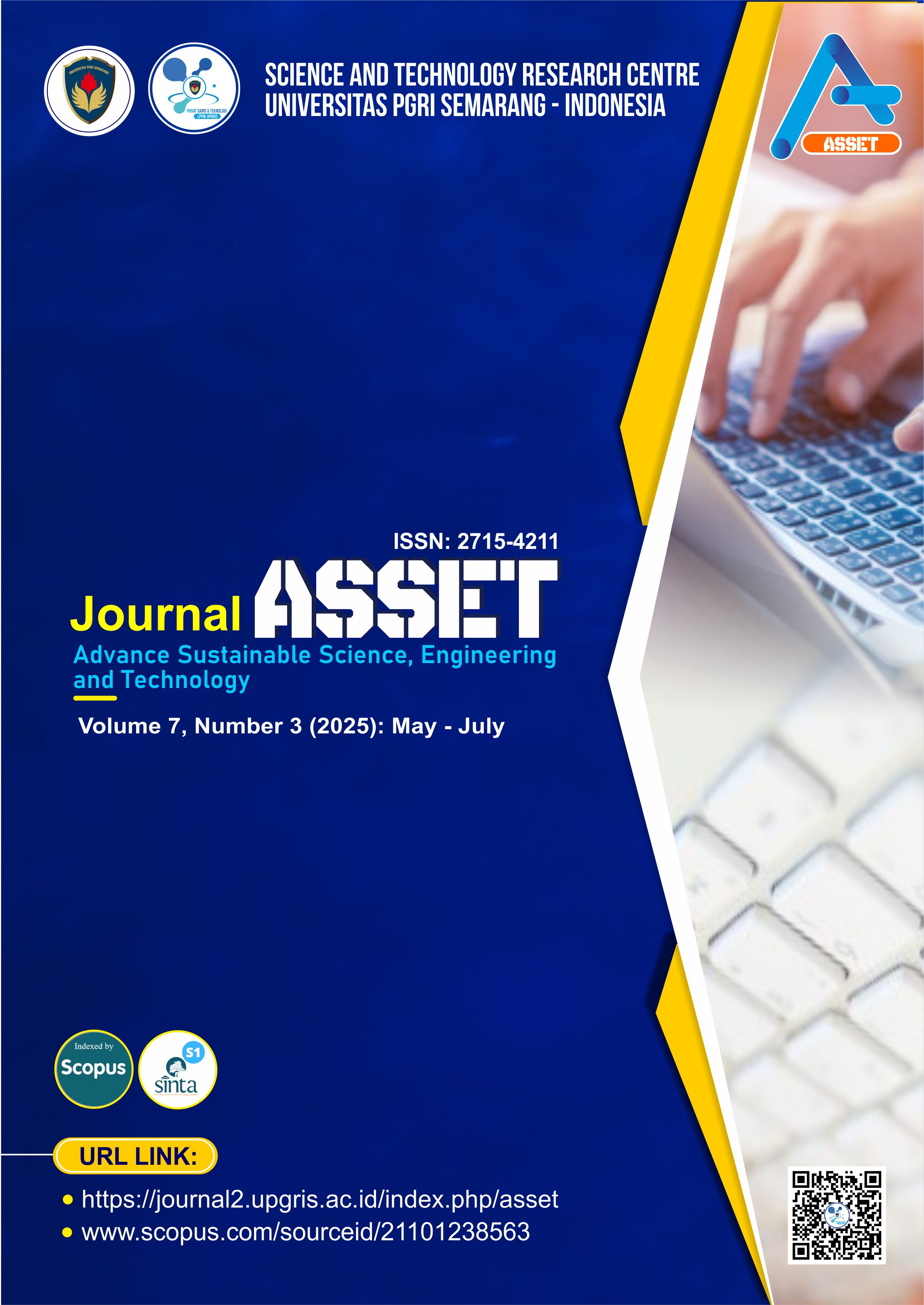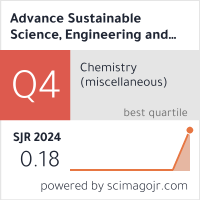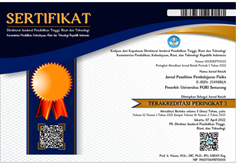Association Between PAI-1 4G/5G Genetic Polymorphism and Uncontrolled Allergic Asthma
DOI:
https://doi.org/10.26877/asset.v7i3.1872Keywords:
allergic asthma, 4G/5G PAI-1 polymorphism, genetic polymorphism, plasminogen activator inhibitor-1, asthma controlAbstract
Airway remodeling is a major challenge in the management of uncontrolled allergic asthma, despite standard therapy with a combination of inhaled corticosteroids (ICS) and long-acting bronchodilators (LABA). Increased levels of Plasminogen Activator Inhibitor-1 (PAI-1) are thought to play a role in this process, and the 4G/5G polymorphism in the PAI-1 gene is one of the genetic factors that affect it. This study aimed to analyze the association between the 4G/5G PAI-1 genetic polymorphism and uncontrolled allergic asthma. A case-control study was conducted at Wahidin Sudirohusodo General Hospital between January-March 2024 on 40 patients with allergic asthma and 40 non-asthmatic subjects. Diagnosis was made through prik test (+), bronchodilator test (+), and asthma control classification according to GINA criteria. All asthmatic patients received Budesonide-Formoterol therapy for 4 weeks. PAI-1 levels were measured and 4G/5G polymorphism was analyzed by RT-PCR. Results showed that PAI-1 levels were significantly higher in uncontrolled asthma patients and in individuals with the 4G/4G genotype compared to non-4G/4G (2.38 ± 0.770 vs 1.65 ± 0.714; p=0.001). The 4G/4G genotype was more common in uncontrolled asthma (OR: 5.8) and was associated with the risk of severe obstruction (OR: 11.6). Thus, it was concluded that the 4G/4G genotype in the PAI-1 gene is associated with increased PAI-1 levels, risk of uncontrolled allergic asthma, and more severe degree of airway obstruction. The implication of the results shows that genetic testing of PAI-1 has the potential to be a predictive biomarker in personalized asthma therapy strategies. This approach can help clinicians identify high-risk patients and tailor interventions early and effectively to prevent remodeling and reduce long-term morbidity.
References
[1] Reddel H, Barnes N, Barnes P, Bateman E, Becker A, Bel E. Global strategy for asthma management and prevention. Global Initiative for Asthma (GINA) 2012.
[2] Syaharuddin S, Mandailina V, Mehmood S. The Role of Mathematics in Machine Learning for Disease Prediction: An In-Depth Review in the Healthcare Domain. Advance Sustainable Science Engineering and Technology 2024;6:2404010.
[3] Alam L. Implementation of the Adaboost Method to Increase the Accuracy of Early Diabetes Predictions to Prevent Death Decision Tree-Based. Advance Sustainable Science, Engineering and Technology 2024;6:0240207.
[4] Mima Y, Ohtsuka T, Ebato I, Nakata Y, Tsujita A, Nakazato Y, et al. Review of T Helper 2-Type Inflammatory Diseases Following Immune Checkpoint Inhibitor Treatment. Biomedicines 2024;12:1886.
[5] Hussain M, Liu G. Eosinophilic asthma: pathophysiology and therapeutic horizons. Cells 2024;13:384.
[6] Bradding P, Porsbjerg C, Côté A, Dahlén S-E, Hallstrand TS, Brightling CE. Airway hyperresponsiveness in asthma: The role of the epithelium. Journal of Allergy and Clinical Immunology 2024.
[7] Bakakos A, Anagnostopoulos N, Bakakos P. Eosinophils and T2 inflammation in severe asthma. Exploration of Asthma & Allergy 2024;2:399–409.
[8] Russell RJ, Boulet L-P, Brightling CE, Pavord ID, Porsbjerg C, Dorscheid D, et al. The airway epithelium: an orchestrator of inflammation, a key structural barrier and a therapeutic target in severe asthma. European Respiratory Journal 2024;63.
[9] Tiotiu A, Steiropoulos P, Novakova S, Nedeva D, Novakova P, Chong-Neto H, et al. Airway remodeling in asthma: mechanisms, diagnosis, treatment, and future directions. Arch Bronconeumol 2024.
[10] Lampalo M, Jukić I, Bingulac-Popović J, Safić H, Ferara N, Popović-Grle S. Značenje polimorfizma 4g/5g pai-1 gena i dijagnostička vrijednost biočimbenika u bolesnika s alergijskim i nealergijskim fenotipovima astme. Acta Clin Croat 2018;57:96–102.
[11] Nie W, Li B, Xiu Q. The− 675 4G/5G polymorphism in plasminogen activator inhibitor-1 gene is associated with risk of asthma: a meta-analysis. PLoS One 2012;7:e34385.
[12] Moustapha M, Chadhli-Chaieb M, Mahjoub T, Chaieb L. − 675 4G/5G and− 844 G/A of Plasminogne Activator Inhibitor-1 (Pai-1) Gene Polymorphisms and Type 2 Diabetes Mellitus in Tunisia: Case-Control Study. Open J Endocr Metab Dis 2019;9:75.
[13] Wang Z, Kong L, Luo G, Zhang H, Sun F, Liang W, et al. Clinical impact of the PAI-1 4G/5G polymorphism in Chinese patients with venous thromboembolism. Thromb J 2022;20:68.
[14] Ma Z, Jhun B, Jung SY, Oh CK. Binding of upstream stimulatory factor 1 to the E-Box regulates the 4G/5G polymorphism–dependent plasminogen activator inhibitor 1 expression in mast cells. Journal of Allergy and Clinical Immunology 2008;121:1006–12.
[15] Yatsenko T, Rios R, Nogueira T, Salama Y, Takahashi S, Adachi E, et al. The influence of 4G/5G polymorphism in the plasminogen-activator-inhibitor-1 promoter on COVID-19 severity and endothelial dysfunction. Front Immunol 2024;15:1445294.
[16] Pratikso P, Purwanto A, Sudarno S. Analysis influence of cement of the asphalt pavement demolition material on roads Semarang-Demak-Indonesia. Journal of Urban and Environmental Engineering 2017;11:73–8.
[17] Wang Z, Chen J, Song J, Kong L, Wang X, Xu T, et al. Plasminogen activator inhibitor-1 4g/5g (rs1799889) polymorphism in chinese patients with diabetes mellitus and hypertension. Diabetes, Metabolic Syndrome and Obesity 2023:1133–47.
[18] Ma Z, Paek D, Oh CK. Plasminogen activator inhibitor‐1 and asthma: role in the pathogenesis and molecular regulation. Clinical & Experimental Allergy 2009;39:1136–44.
[19] Mohamed FN, Rasha SY, Mai EA, Mona AFF, Youssra MG. Prothrombotic state assessment in asthma and its relation to asthma severity and effect of inhaled corticosteroids. Egypt J Chest Dis Tuberc 2019;68:68–73.
[20] Tang R, Lyu X, Li H, Sun J. The 4G/5G polymorphism of plasminogen activator inhibitor type 1 is a predictor of allergic cough. Front Genet 2023;14:1139813.
[21] Katko M, Galgoczi E, Erdei A, Gazdag A, Berta E, Bodor M, et al. The 4G/5G polymorphism of plasminogen activator inhibitor type 1 is a predictor of moderate-to-severe thyroid eye disease. J Inflamm Res 2021:1883–90.
[22] Bakakos A, Anagnostopoulos N, Bakakos P. Eosinophils and T2 inflammation in severe asthma. Exploration of Asthma & Allergy 2024;2:399–409.
[23] Tiotiu A, Steiropoulos P, Novakova S, Nedeva D, Novakova P, Chong-Neto H, et al. Airway remodeling in asthma: mechanisms, diagnosis, treatment, and future directions. Arch Bronconeumol 2024.
[24] Katko M, Galgoczi E, Erdei A, Gazdag A, Berta E, Bodor M, et al. The 4G/5G polymorphism of plasminogen activator inhibitor type 1 is a predictor of moderate-to-severe thyroid eye disease. J Inflamm Res 2021:1883–90.
[25] Sherenian MG, Cho SH, Levin A, Min J, Oh SS, Hu D, et al. PAI‐1 gain‐of‐function genotype, factors increasing PAI‐1 levels, and airway obstruction: The GALA II Cohort. Clinical & Experimental Allergy 2017;47:1150–8.
[26] Han JY, Jo A, Fukahori S, Tabor M, Kumar R, Yon DK, et al. Genotype-specific PAI-1 Regulation in Human Epithelial Cells and Mast Cells by Genistein. Journal of Allergy and Clinical Immunology 2024;153:AB141.
[27] Cho S, Kang J, Lyttle C, Harris K, Daley B, Grammer L, et al. Association of elevated plasminogen activator inhibitor 1 levels with diminished lung function in patients with asthma. Annals of Allergy, Asthma & Immunology 2011;106:371–7.
[28] Cho S, Kang J, Lyttle C, Harris K, Daley B, Grammer L, et al. Association of elevated plasminogen activator inhibitor 1 levels with diminished lung function in patients with asthma. Annals of Allergy, Asthma & Immunology 2011;106:371–7.











